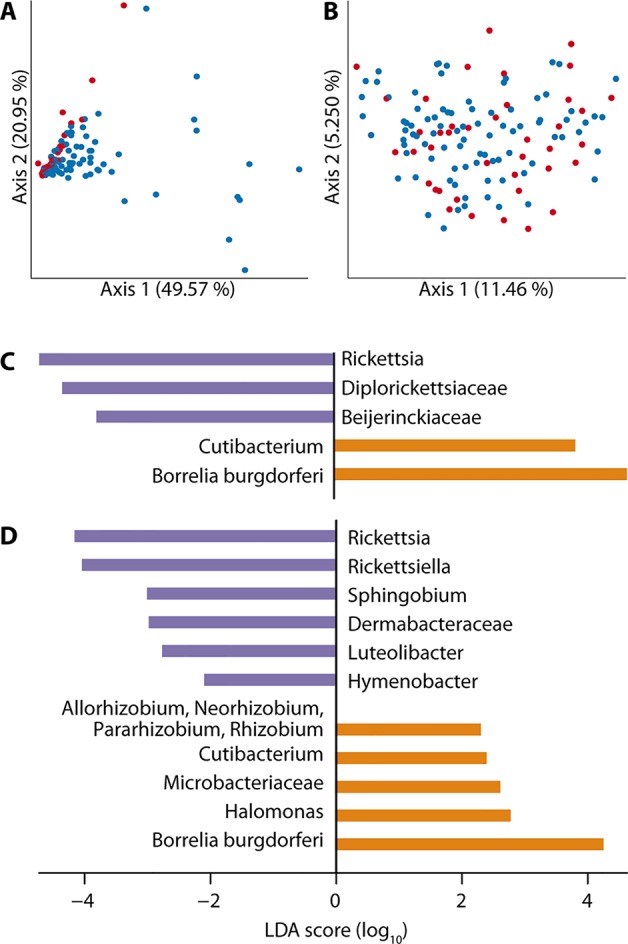Figure 4.

Overall beta diversity of the microbiome does not differ by B. burgdorferi infection status; however, specific taxa are significantly over and underrepresented in infected ticks. (A) Beta diversity, measured by weighted Unifrac distance, differed significantly between infected (blue) and uninfected (red) ticks (pseudo-F test = 8.28366, p = 0.001), but (B) this difference disappears once B. burgdorferi is removed from the analysis (pseudo-F test = 1.53959, p = 0.206). (C) LEfSe discriminant analysis shows that reads from B. burgdorferi and Cutibacterium are significantly more abundant (orange) in B. burgdorferi-positive ticks, while reads from three taxa are significantly less abundant (purple), including Rickettsia. (D) The underabundance of Rickettsia persists in LEfSe analysis of female ticks only, and the number of significantly more (orange; 5 taxa) and less (purple; 6 taxa) abundant taxa increases.
